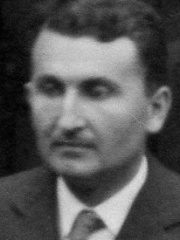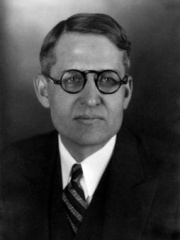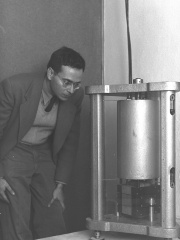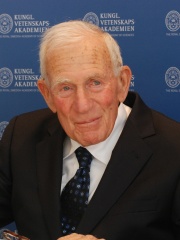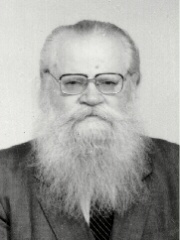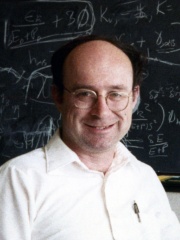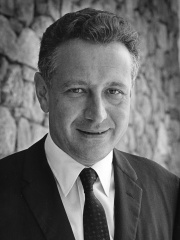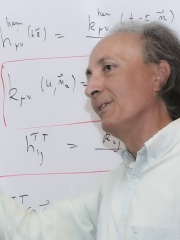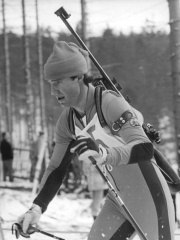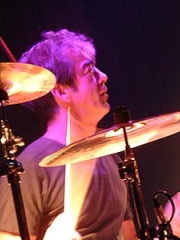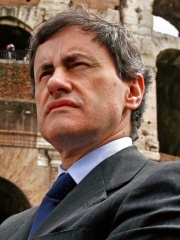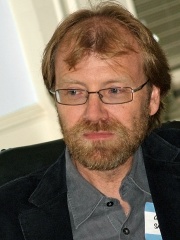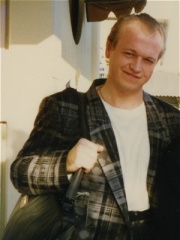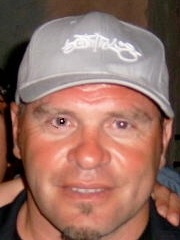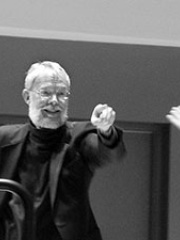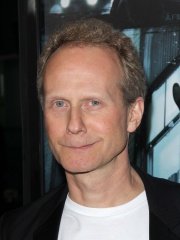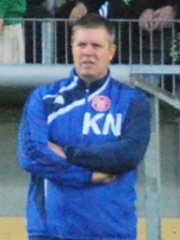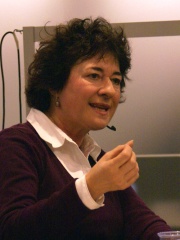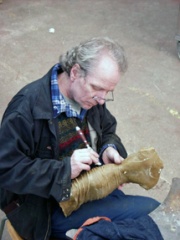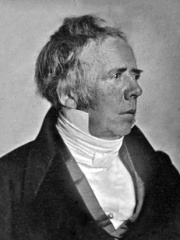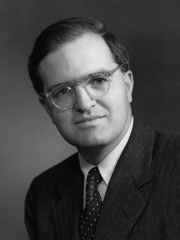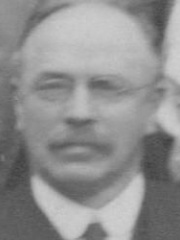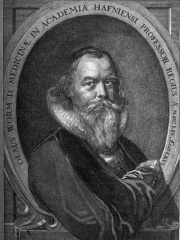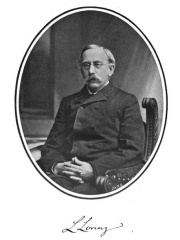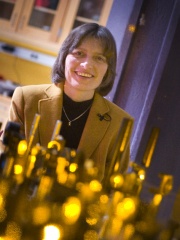Physicist
Henrik Svensmark
1958 - today
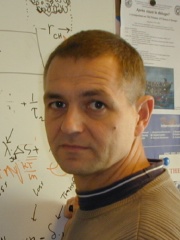
 Henrik Svensmark
Henrik Svensmark
Henrik Svensmark (born 1958) is a Danish physicist and professor in the Division of Solar System Physics at the Danish National Space Institute (DTU Space) in Copenhagen. He is known for his work on the hypothesis that fewer cosmic rays are an indirect cause of global warming via cloud formation. Read more on Wikipedia
His biography is available in 16 different languages on Wikipedia (up from 15 in 2024). Henrik Svensmark is the 783rd most popular physicist (down from 729th in 2024), the 630th most popular biography from Denmark (down from 559th in 2019) and the 8th most popular Danish Physicist.
Memorability Metrics
Page views of Henrik Svensmark by language
Among Physicists
Among physicists, Henrik Svensmark ranks 783 out of 851. Before him are Emil Wolf, Egon Orowan, Harvey Fletcher, Frank Press, Walter Munk, and Anatoly Logunov. After him are James M. Bardeen, Rolf Landauer, Robert Detweiler, Thibault Damour, Erwin Hahn, and Abhay Ashtekar.
Most Popular Physicists in Wikipedia
Go to all RankingsEmil Wolf
1922 - 2018
HPI: 52.40
Rank: 777
Egon Orowan
1902 - 1989
HPI: 52.31
Rank: 778
Harvey Fletcher
1884 - 1981
HPI: 52.30
Rank: 779
Frank Press
1924 - 2020
HPI: 52.29
Rank: 780
Walter Munk
1917 - 2019
HPI: 52.27
Rank: 781
Anatoly Logunov
1926 - 2015
HPI: 52.11
Rank: 782
Henrik Svensmark
1958 - Present
HPI: 52.07
Rank: 783
James M. Bardeen
1939 - 2022
HPI: 51.94
Rank: 784
Rolf Landauer
1927 - 1999
HPI: 51.91
Rank: 785
Robert Detweiler
1930 - 2003
HPI: 51.78
Rank: 786
Thibault Damour
1951 - Present
HPI: 51.68
Rank: 787
Erwin Hahn
1921 - 2016
HPI: 51.51
Rank: 788
Abhay Ashtekar
1949 - Present
HPI: 51.49
Rank: 789
Contemporaries
Among people born in 1958, Henrik Svensmark ranks 451. Before him are Reg E. Cathey, Frank Ullrich, Derek Riggs, Bill Berry, Mick Karn, and Etienne De Wilde. After him are Gianni Alemanno, George Saunders, Bob Bradley, Lenny Von Dohlen, Mark King, and Serse Cosmi.
Others Born in 1958
Go to all RankingsReg E. Cathey
ACTOR
1958 - 2018
HPI: 52.18
Rank: 445
Frank Ullrich
ATHLETE
1958 - Present
HPI: 52.15
Rank: 446
Derek Riggs
PAINTER
1958 - Present
HPI: 52.13
Rank: 447
Bill Berry
MUSICIAN
1958 - Present
HPI: 52.11
Rank: 448
Mick Karn
MUSICIAN
1958 - 2011
HPI: 52.11
Rank: 449
Etienne De Wilde
CYCLIST
1958 - Present
HPI: 52.08
Rank: 450
Henrik Svensmark
PHYSICIST
1958 - Present
HPI: 52.07
Rank: 451
Gianni Alemanno
POLITICIAN
1958 - Present
HPI: 52.06
Rank: 452
George Saunders
WRITER
1958 - Present
HPI: 52.05
Rank: 453
Bob Bradley
COACH
1958 - Present
HPI: 52.02
Rank: 454
Lenny Von Dohlen
ACTOR
1958 - 2022
HPI: 51.98
Rank: 455
Mark King
MUSICIAN
1958 - Present
HPI: 51.98
Rank: 456
Serse Cosmi
SOCCER PLAYER
1958 - Present
HPI: 51.98
Rank: 457
In Denmark
Among people born in Denmark, Henrik Svensmark ranks 630 out of 1,032. Before him are Poul Ruders (1949), Niels Arden Oplev (1961), Kent Nielsen (1961), Hans-Henrik Ørsted (1954), Deepika Padukone (1986), and Poul Pedersen (1932). After him are Søren Petersen (1894), Brian Priske (1977), Pia Tafdrup (1952), Jac Nellemann (1944), Anders Peter Nielsen (1867), and Jens Galschiøt (1954).
Others born in Denmark
Go to all RankingsPoul Ruders
COMPOSER
1949 - Present
HPI: 52.33
Rank: 624
Niels Arden Oplev
FILM DIRECTOR
1961 - Present
HPI: 52.21
Rank: 625
Kent Nielsen
COACH
1961 - Present
HPI: 52.21
Rank: 626
Hans-Henrik Ørsted
CYCLIST
1954 - Present
HPI: 52.17
Rank: 627
Deepika Padukone
ACTOR
1986 - Present
HPI: 52.13
Rank: 628
Poul Pedersen
SOCCER PLAYER
1932 - 2016
HPI: 52.09
Rank: 629
Henrik Svensmark
PHYSICIST
1958 - Present
HPI: 52.07
Rank: 630
Søren Petersen
BOXER
1894 - 1945
HPI: 52.06
Rank: 631
Brian Priske
SOCCER PLAYER
1977 - Present
HPI: 51.99
Rank: 632
Pia Tafdrup
WRITER
1952 - Present
HPI: 51.95
Rank: 633
Jac Nellemann
RACING DRIVER
1944 - Present
HPI: 51.93
Rank: 634
Anders Peter Nielsen
ATHLETE
1867 - 1950
HPI: 51.92
Rank: 635
Jens Galschiøt
SCULPTOR
1954 - Present
HPI: 51.88
Rank: 636
Among Physicists In Denmark
Among physicists born in Denmark, Henrik Svensmark ranks 8. Before him are Hans Christian Ørsted (1777), Aage Bohr (1922), Martin Knudsen (1871), Ole Worm (1588), Ludvig Lorenz (1829), and Lene Hau (1959).
Hans Christian Ørsted
1777 - 1851
HPI: 85.42
Rank: 2
Aage Bohr
1922 - 2009
HPI: 75.84
Rank: 3
Martin Knudsen
1871 - 1949
HPI: 60.75
Rank: 4
Ole Worm
1588 - 1654
HPI: 59.64
Rank: 5
Ludvig Lorenz
1829 - 1891
HPI: 59.20
Rank: 6
Lene Hau
1959 - Present
HPI: 52.96
Rank: 7
Henrik Svensmark
1958 - Present
HPI: 52.07
Rank: 8

